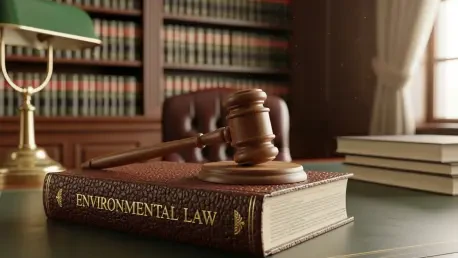Introduction to Australia’s Environmental Law Landscape
Australia stands at a critical juncture in 2025, grappling with an alarming rate of biodiversity loss that ranks among the highest globally, with over 100 species declared extinct since European settlement, highlighting the urgent need for reform. This stark statistic underscores the urgency of reforming the nation’s environmental laws, particularly the Environment Protection and Biodiversity Conservation Act 1999 (EPBC Act), which serves as the cornerstone of federal environmental governance. The Act aims to safeguard nationally significant species, habitats, and cultural heritage sites, yet its effectiveness has long been questioned amid mounting ecological crises.
For over two decades, the EPBC Act has been the primary mechanism for environmental protection, but it has faced consistent criticism for being outdated and ill-equipped to address contemporary challenges like climate change and habitat destruction. Reports and reviews spanning several years have highlighted its inability to prevent ongoing species decline or enforce meaningful conservation outcomes. This has led to widespread calls for modernization to ensure Australia meets both domestic needs and international obligations.
The Albanese government has made reform a flagship commitment, promising to overhaul these laws to better protect the environment. With legislation introduced in late 2024 and ongoing discussions in 2025, there is cautious optimism but also significant concern about whether the proposed changes will deliver the transformative impact needed. The stakes are high as Australia navigates this pivotal moment in environmental policy.
Assessing the Proposed Reforms
Key Elements and Promises
The core of Labor’s environmental law reforms revolves around establishing National Environmental Standards, a set of legally binding criteria designed to guide decisions on development projects, land clearing, and conservation efforts. These standards aim to create a consistent framework for protecting biodiversity and ensuring sustainable outcomes across various sectors. Additionally, the creation of an independent Environment Protection Agency (EPA) is a central pillar, intended to oversee compliance and enforcement with greater authority than current mechanisms allow.
Another significant promise is the “No New Extinctions” goal, a bold commitment to halt the loss of species through targeted conservation strategies. Complementing this is the establishment of Environment Information Australia, a body tasked with collecting and disseminating data to track progress on environmental targets. Such transparency is seen as vital for holding decision-makers accountable and informing future policy adjustments.
Labor has also emphasized stronger Indigenous engagement, pledging meaningful consultation with First Nations communities in environmental decision-making. The introduction of “no-go” zones for critical habitats signals an intent to prioritize protection over development in areas of irreplaceable ecological value. These elements collectively aim to rebuild trust in environmental governance, though their implementation remains under scrutiny.
Gaps and Limitations
Despite these ambitious promises, several critical gaps in the proposed reforms raise doubts about their effectiveness. One glaring omission is the absence of a “climate trigger” within the EPBC Act framework, a mechanism that would require assessment of greenhouse gas emissions from major projects. Without this, the reforms fail to directly address a key driver of environmental degradation, particularly in a country with a significant fossil fuel export industry.
Reliance on existing tools like the Safeguard Mechanism, which caps emissions from large industrial facilities, is often cited as an alternative. However, this approach excludes emissions from exported fossil fuels, which account for a substantial portion of Australia’s global carbon footprint. Critics argue that this loophole undermines the reforms’ ability to tackle climate impacts comprehensively, leaving ecosystems vulnerable to worsening conditions.
Further concerns center on insufficient funding allocations and vague enforceable targets. While data collection through Environment Information Australia is a positive step, there is little clarity on how resources will be mobilized to achieve the “No New Extinctions” goal. Without robust financial backing and specific, measurable objectives, the reforms risk becoming symbolic rather than substantive, potentially failing to reverse long-standing trends of environmental decline.
Challenges in Implementing Effective Reforms
Political and economic barriers pose significant hurdles to the success of these environmental reforms. Opposition from the Coalition, which often prioritizes industry interests over conservation, has already influenced negotiations, potentially watering down key provisions. Industry lobbyists, particularly from mining and forestry sectors, continue to exert pressure to maintain exemptions and limit regulatory oversight, creating tension with environmental objectives.
A notable risk lies in the potential for ministerial overreach, which could compromise the independence of the proposed EPA. If final approval powers remain with government ministers rather than an autonomous body, public confidence in fair and science-based decision-making may erode. This concern is amplified by past instances where political considerations have overridden ecological imperatives in project approvals.
Balancing development pressures with conservation needs remains a complex challenge, especially in areas governed by regional forestry agreements and mining interests. While some states have moved to end native logging, national consistency is lacking, leaving habitats of endangered species at risk. Addressing this requires innovative solutions like enhanced transparency in decision-making processes and stronger public accountability measures to ensure that environmental priorities are not sidelined by economic agendas.
Regulatory and Political Dynamics
The broader regulatory landscape shaping Australia’s environmental policy includes historical evaluations of the EPBC Act, with major reviews conducted over the past decade exposing systemic flaws. These assessments have consistently called for stronger protections and better enforcement, yet progress has been slow due to competing political priorities. The current reforms are thus seen as a culmination of long-standing recommendations, albeit under constrained circumstances.
Negotiations between Labor and the Coalition are pivotal in determining the final shape of the legislation, with compromises likely to reflect a delicate balance of interests. Environmental groups advocate for stringent measures, while industry stakeholders push for flexibility to minimize economic impacts. Indigenous communities, meanwhile, seek greater recognition of their role in stewardship, adding another layer of complexity to the policy dialogue.
Australia’s international commitments, including its bid to host the UN’s COP31 climate summit, heighten the stakes of these reforms. Global scrutiny of the nation’s environmental record, particularly its emissions profile and biodiversity conservation efforts, places additional pressure on policymakers to deliver credible outcomes. The interplay of domestic politics and international expectations will undoubtedly influence the ambition and scope of the new laws.
Future Outlook for Environmental Protection
Looking ahead, the trajectory of Australia’s environmental future hinges on the robustness of the reforms enacted in 2025. If the legislation incorporates strong, enforceable standards and genuine climate considerations, there is potential for meaningful progress in halting biodiversity loss. However, weaker reforms could exacerbate existing challenges, leaving species and habitats increasingly vulnerable over the coming years.
Emerging priorities include integrating climate change impacts more deeply into environmental planning, alongside protecting cultural heritage as a core component of conservation. Addressing these interconnected issues holistically will be essential to building resilience against accelerating ecological threats. Failure to do so may result in missed opportunities to safeguard iconic landscapes and species unique to Australia.
Public trust and global attention will play crucial roles in shaping environmental governance moving forward. As international focus intensifies, particularly with high-profile events like COP31 on the horizon, Australia must demonstrate leadership in conservation. Long-term implications of inadequate reforms could include irreversible species extinctions and habitat loss, underscoring the need for sustained commitment beyond the current legislative cycle.
Conclusion and Recommendations
Reflecting on the discourse surrounding Labor’s environmental law reforms, it becomes evident that while steps like the creation of Environment Information Australia mark progress, critical shortcomings persist. The absence of a climate trigger and uncertainties around funding cast doubts on the ability of these changes to fully address Australia’s intertwined climate and biodiversity crises. These gaps have left stakeholders wary of whether the nation can achieve its conservation aspirations.
Moving forward, actionable steps emerge as vital to strengthening outcomes. Establishing a truly independent EPA with clear authority, free from political interference, stands out as a priority to ensure decisions are grounded in science. Integrating robust climate considerations into project assessments is also deemed essential to align environmental laws with global sustainability goals.
Additionally, genuine consultation with Indigenous communities must be prioritized to honor their expertise in land management, while increased transparency in decision-making can rebuild public trust. Bold action is recognized as necessary to position Australia as a leader in conservation, especially under the international spotlight. These measures offer a pathway to not only address past shortcomings but also set a precedent for future environmental stewardship.









